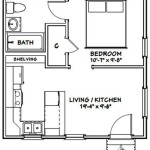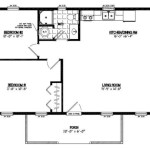Essential Aspects of Standard Scale For Floor Plans
Floor plans are essential tools for architects, builders, and homeowners alike. They provide a clear and concise representation of the layout of a building, making it easier to visualize and plan for construction or renovations. However, to ensure that floor plans are accurate and useful, they must be drawn to a standard scale that is easy to understand and use.
When it comes to standard scale for floor plans, there are a few key aspects to consider:
- Units of Measurement: The first step in determining the scale of a floor plan is to decide on the units of measurement that will be used. The most common units of measurement for floor plans are inches, feet, and meters.
- Scale Ratio: Once the units of measurement have been chosen, the next step is to determine the scale ratio. The scale ratio is the relationship between the size of the drawing and the size of the actual space. For example, a scale ratio of 1/4 inch = 1 foot means that 1/4 inch on the drawing represents 1 foot in the actual space.
- Drawing Size: The drawing size is the overall size of the floor plan drawing. The drawing size should be large enough to clearly show all of the details of the floor plan, but not so large that it becomes difficult to handle or store.
In addition to these key aspects, there are a few other factors that can affect the scale of a floor plan, including:
- Level of Detail: The level of detail in a floor plan can affect the scale that is used. A simple floor plan that only shows the basic layout of a space may be drawn to a smaller scale than a more detailed floor plan that shows all of the fixtures, furniture, and other details.
- Purpose of the Floor Plan: The purpose of the floor plan can also affect the scale that is used. A floor plan that is being used for construction purposes may need to be drawn to a more precise scale than a floor plan that is being used for marketing purposes.
Choosing the right scale for a floor plan is important for ensuring that the floor plan is accurate, useful, and easy to understand. By considering the factors discussed above, you can choose the right scale for your floor plan and create a valuable tool for your project.
How To Draw ¼ 1 Scale For A Floor Plan Quora

How To Measure And Draw A Floor Plan Scale
How To Draw ¼ 1 Scale For A Floor Plan Quora

How To Measure Distances In Technical Drawings With Custom Scale Annotator

12 Examples Of Floor Plans With Dimensions

How To Draw A Floor Plan Scale Measuring Sketching

How To Read A Floor Plan With Dimensions Houseplans Blog Com

How To Read Floor Plans With Dimensions A Guide

How To Measure And Draw A Floor Plan Scale

How To Read A Basic Floor Plan Lofty Building Group
Related Posts








